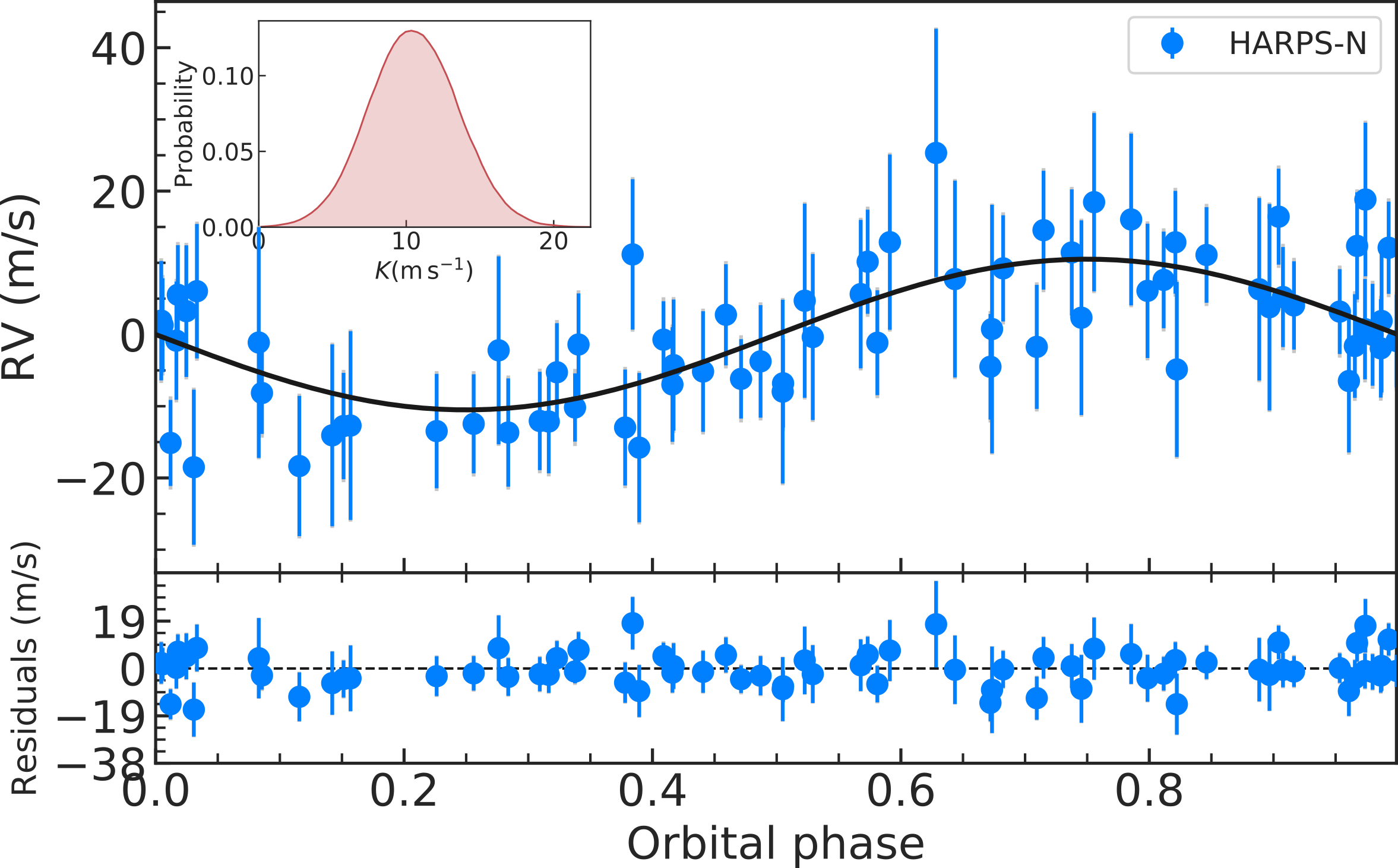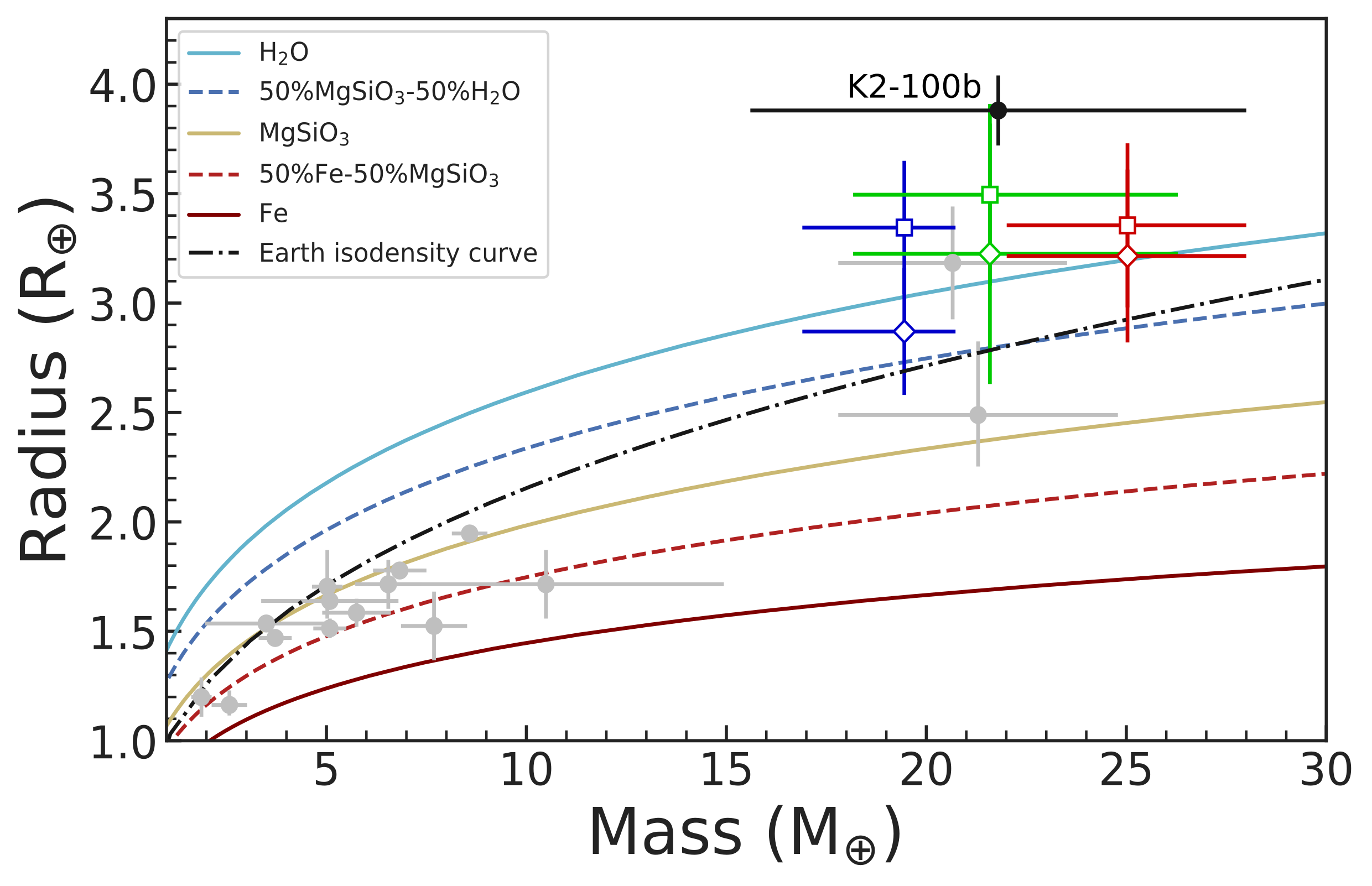First firm Doppler confirmation and mass determination of a young hot Neptune
Using the HARPS-N spectrograph mounted at the Telescopio Nazionale Galileo, an international team of astronomers led by Dr. Oscar Barragán from the Department of Physics of the University of Oxford has measured for the first time the mass of a transiting planet in a young open cluster. The object -- K2-100b, a Neptune-sized planet transiting an active star in the Praesepe open cluster -- is bound to become a valuable target to test planetary evolution models and to study the effects of stellar irradiation on the atmospheres of exoplanets.
K2-100b was found to transit its host star using data from NASA's K2 space mission. The star, K2-100, is a relatively bright member (V=10.5) of the Praesepe open cluster, which has an age of 750 Myr and a distance from the Sun of 180 parsec. Given the short orbital period of the planet (1.67 days) and the brightness of the host star, K2-100 might look like an excellent candidate to measure the planet's mass via high-precision radial velocity, as those provided by the HARPS-N spectrograph. However, being a 750-year-old sun-like star, K2-100 is a challenging target for planetary mass determination via Doppler observations because the star is magnetically active, owing to its relatively high rotation rate. Magnetically active regions (spots and plages) combined with stellar rotation give rise to quasi-periodic variations in the apparent stellar radial velocity, which can be very difficult to disentangle from planetary signals. Gaussian process regression has been recently recognized an excellent technique to model activity signals in Doppler data. This approach is even more powerful when complementary activity and spectral line symmetry indicators are modelled alongside the radial velocities.
The team acquired 78 high-resolution spectra of K2-100 with the HARPS-N spectrograph as part of 3 different observing programs (CAT15B_35, CAT15B_79, and ITP16_6). Using a powerful customised Gaussian process approach, they detected the Doppler reflex motion of the star induced by the transiting planet at the > 3 σ level, even if the amplitude of the latter is considerably lower than the amplitude of the radial velocity variation induced by the stellar activity. They measured a mass of 21.8 +/- 6.2 Earth masses.
The mass determination of K2-100b will help astronomers to understand how high-energy stellar radiation affects the planetary atmosphere, causing it to escape away from the planet, a process called "photoevaporation". The relatively low density of K2-100b implies that the planet retains a significant volatile envelope. However, the team found out that, due to the high level of radiation K2-100b receives from its host star, the planet's atmosphere is currently evaporating. They plan to test the evaporating scenario with further observations.

Caption: RV curve of K2-100 folded to the orbital period of K2-100b. HARPS-N data (blue circles) are shown following the subtraction of the instrumental offset and GP model. Grey error bars account for the jitter. The Keplerian solution is shown as a solid line. Top-left inset displays the posterior distribution for K.

Caption: Mass vs radius diagram for small (Rp < 4 R⊕) planets which receive an insolation > 650 larger than the Earth (grey circles). The location of K2-100b is marked with a black circle. Its predicted planetary mass and radius at 2 and 5 Gyr is shown with empty squares and diamonds, respectively, with colours corresponding to different initial rotation rates XUV fluxes for the star: fast/high (red), moderate (green) and slow/low (blue) (see paper for details).
Link to MNRAS paper: https://academic.oup.com/mnras/advance-article-abstract/doi/10.1093/mnras/stz2569/5569669

